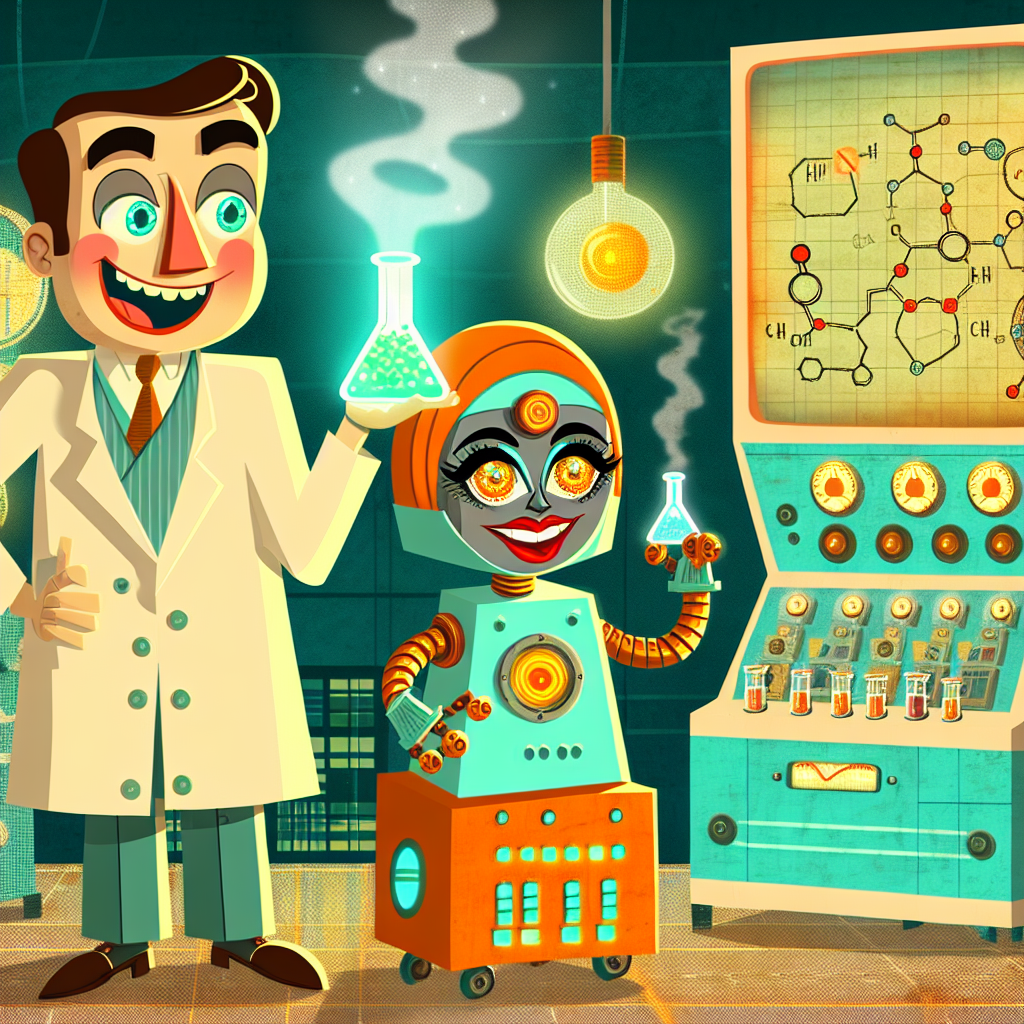AI-Designed Drug Success
At the crossroads of medicine and innovation lies a monumental achievement—one that spurs fresh hope for treating diseases with unprecedented precision. In a striking development, a drug designed through machine-learning algorithms has shown positive results in clinical trials, marking one of the first major successes of this type. While this moment was eagerly anticipated by scientists and pharmaceutical companies alike, it also demonstrates that the integration of advanced computational models with traditional drug discovery pipelines is no longer a futuristic dream but a tangible reality.
The Brains Behind the Breakthrough
A typical drug development process can take years, if not decades, and it purportedly costs up to $2.6 billion USD from start to finish. Enter machine-learning technology, which promises to cut down this daunting timeline significantly by running millions of simulations quickly, predicting potential drug candidates accurately, and allowing pharmaceutical teams to focus their attention on the most promising leads.
Instead of simply relying on brute-force lab work and trial-and-error testing, researchers have now harnessed the computational power of algorithms to design tailored compounds that can impact certain disease proteins or cellular mechanisms far more efficiently. The drug, reportedly designed to target a protein involved in a particular condition, was tested in a clinical trial setting with favorable outcomes.
A Landmark Feat
There’s a reason why this successful test is causing so much excitement—even among those outside the pharmaceutical industry. It represents a radical shift in how drugs could be designed in the future.
Some of the most challenging diseases out there, including forms of cancer and neurodegenerative disorders, need treatments that target particular molecular mechanisms in the body. Creating drugs capable of this specificity is a monumental task that often sees even promising treatments fall short. However, the recent positive clinical trial results suggest that machine-learning tools can provide that much-needed clarity and refinement to the drug discovery process—delivering results that even the keenest human brains couldn’t achieve alone.
The Key Features of the Drug Design
Understanding the success behind such breakthroughs involves recognizing a few different technological advantages:
- Speed: Algorithms can go through trillions of chemical combinations and biological effects in a fraction of the time it takes for researchers in a lab.
- Precision: These systems are able to model exact interactions between a drug candidate and specific proteins or receptors in the body with high accuracy.
- Cost Efficiency: Much of the pre-clinical, trial-and-error testing can be reduced, saving considerable time and money in hitting the right candidate early.
- Depth: Machine learning allows multidimensional analysis, identifying not just the primary action of a drug but possible side effects or secondary benefits.
These characteristics empower pharmaceutical researchers to design drugs not just quickly but with remarkable accuracy, allowing compounds to go from “found” to “tested” in a much shorter span of time.
Challenges and Road Ahead
Of course, this success, while groundbreaking, doesn’t suggest the journey ahead is without challenges. Drug design, even with machine learning’s assistive capabilities, still requires stringent testing at every phase. While this recent trial showed promise, figuring out how these compounds interact within complex, real-world human biological systems remains a massive hurdle.
Moreover, regulatory bodies such as the U.S. Food and Drug Administration (FDA) will need to catch up with these technological advances. Currently, there are discussions around how best to assess treatments designed with machine-learning tools. Regulatory standards, which have long been tailored to traditional discovery methods, may need a significant update to accommodate this new wave of computational advancements. It’s innovation, but with necessary oversight.
However, with the successful trial behind it, this pioneering drug is creating a roadmap for machine-learning-based approaches to blossom in the pharmaceutical world. Whether its role will be as an adjunct to human brilliance or a leap into unsolved medical mysteries, we are just beginning to witness its impact.
The Start of Something Bigger
When technology and medicine intersect, the possibilities are breathtaking. This positive clinical trial result serves as a reminder that advancements in machine learning won’t simply disrupt industries—they could revolutionize them. For diseases that have evaded cures for decades, perhaps even centuries, this latest success brings hope that we are entering a golden age of pharmacology and medical science.
What’s next? We can expect machine-assisted drug development to expand into other complex disease areas, enhancing precision treatments. Fueled by this initial success, pharmaceutical companies will race to integrate more advanced models into their drug design pipelines. While this win confirms the potential applications of machine-learning approaches, it leaves us with one all-important question: How soon until computationally crafted treatments become the new norm?
Regardless, one thing’s for certain—it’s an exciting day for medicine, a victory that could pave the way for countless more innovations in patient outcomes and treatments worldwide. What was once a theoretical possibility just became a very hopeful piece of medical reality.
In this new era, ground-breaking clinical trial results like these suggest that the impossible might just become possible.


